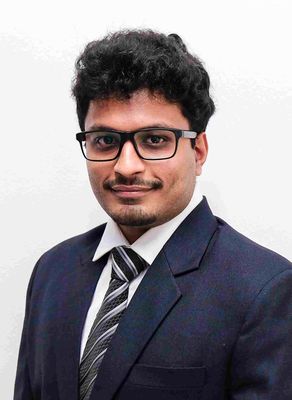Arvind Venkatraman
Arvind Venkatraman
Masterstudent
Titel: Development and Characterization of composite bioinks of ADA-GEL incorporating bioactive glass for 3D Bioprinting
Betreuer: Susanne Heid, Prof. Aldo R. Boccaccini
3D bioprinting is a one-step fabrication process involving the simultaneous processing of hydrogels, biological molecules and cells. An extrusion-based layer-by-layer deposition of a bioink makes it one of the most customizable and efficient processes in the field of modern tissue engineering [1]. There has been extensive research in finding optimal bioink compositions for effective printing of cells encapsulated within 3D hydrogels for various applications in tissue engineering. Partially oxidized alginate (ADA) crosslinked with gelatin (GEL) is suitable as bioink and provides a microenvironment similar to the extracellular matrix and adhesion sites for good cell immobilization [2]. However, it is imperative to improve the biochemical properties and structural fidelity of the printed constructs [1, 3]. This project will hence aim to incorporate bioactive glass inorganic fillers into ADA-GEL hydrogel and the obtained composite hydrogels will be investigated with respect to the enhancement of the scaffold printing ability, shape fidelity and subsequently the mechanical stability over different incubation periods. In parallel, further studies will be carried out to characterize the hydrogel´s biocompatibility with encapsulated cells.
[1] Leite, A. J., et al., Bioplotting of a bioactive alginate dialdehyde-gelatin composite hydrogel containing bioactive glass nanoparticles, Biofabrication 8 (3), (2016) 035005.
[2] T. Zehnder, B. Sarker, A. R. Boccaccini and R. Detsch, Evaluation of an alginate–gelatine crosslinked hydrogel for bioplotting, Biofabrication 7 (2015) 025001.
[3] Utech, S., Boccaccini, A. R., A review of hydrogel-based composites for biomedical applications: enhancement of hydrogel properties by addition of rigid inorganic fillers, J. Mater. Sci. 51 (2016) 271–310.

